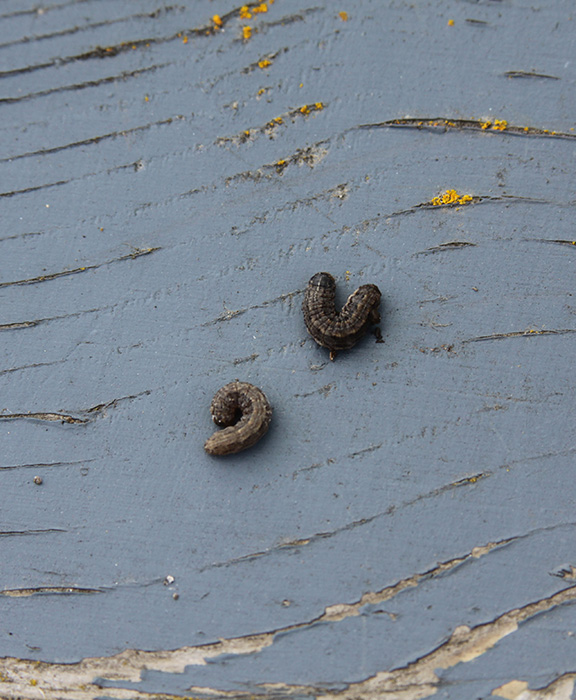Cutworms

Family name: Noctuidae
Size: Up to 2″ long
Color(s): Tan to brown to green
Life cycle: Both the adult moths and larvae are nocturnal. The moths lay eggs on grass blades, soil, weeds, plants or plant debris. After hatching, the larvae primarily feed on small plants or roots until the worms reach about 1/2″ long. At that point, they begin eating through the stems of young, tender plants. After 2 to 4 weeks, they pupate in the soil
Signs of their activity: Wilting seedlings or seedlings cut off at the soil surface. Some types of cutworms will climb a plant and feed on the leaves or buds. If you see these signs, look for evidence of “munching” on a plant stem at or just below the soil surface.
Typically seen on: Seedlings, sometimes with the cutworm curled around the stem during the day. Often prevalent in new garden areas that were formerly in turfgrass. I’ve had problems with cutworms nibbling on young members of the Cucurbit family (i.e., squash, melons, pumpkins, cucumbers) as the seedlings’ stems are quite tender and succulent.
Controls: Monitor your garden frequently for damage. When planting vegetable seedlings, consider placing a paper or cardboard tube (i.e., a toilet paper roll or paper towel roll) around the stem area, from about 1 1/2″ below the soil surface up to 1″ above. This will prevent the worms from getting to the plant stems. Hand-picking any time you spot a cutworm is the most successful control! You can also sprinkle diatomaceous earth around the base of the plant stems.
Natural predators: Damsel bugs, ground beetles, spiders, tachinid flies. A spray of Bt var. kurstaki is effective if you spot initial signs of damage on plant stems. ALWAYS follow the label directions for application.
Additional information: Washington State University Hortsense Cutworms and Loopers, University of Minnesota Extension Cutworms in Home Gardens, and UMass Amherst Center for Agriculture Food and the Environment Cutworms.
Back to Organic Pest Control
